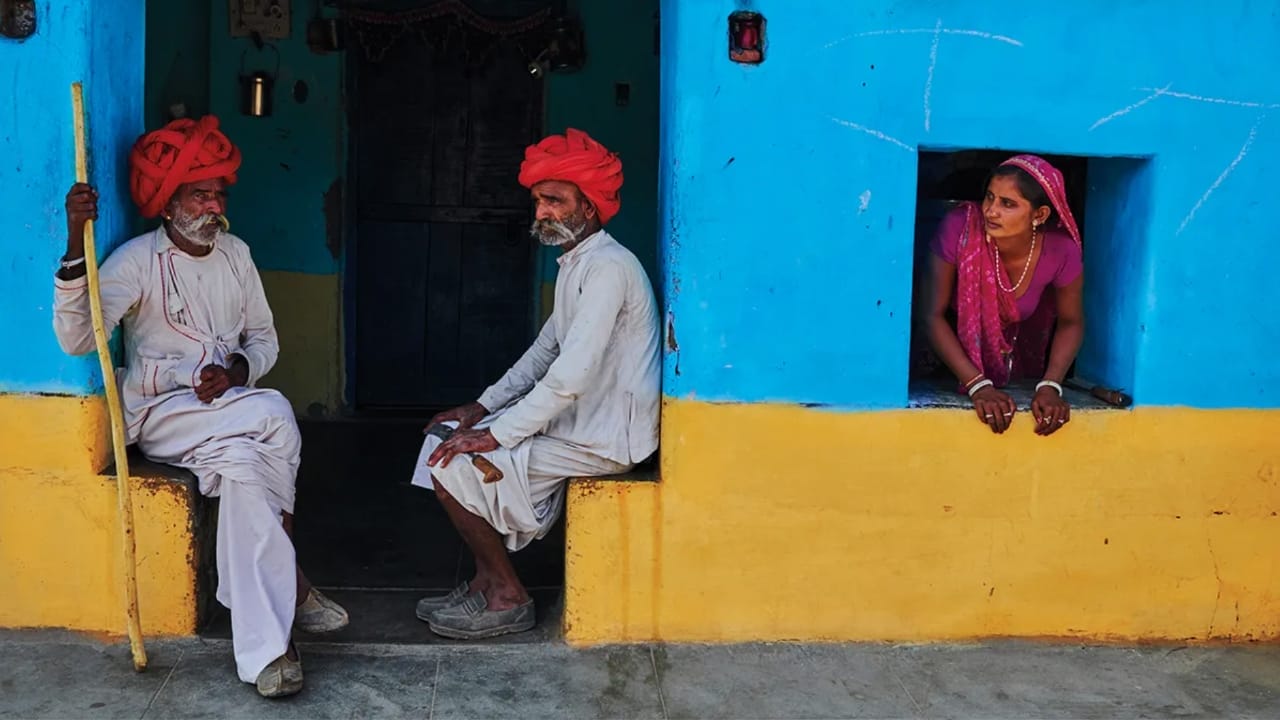Consider the domed and turreted palaces that took 22 generations to complete, their walls inlaid with rubies, jade, jasper, onyx, and cornelian. Or the thrones hewn from single blocks of serpentine, the porcelain tiles studded with diamonds, and the life-size white-marble elephants standing sentry in jasmine-scented gardens. Few monarchies have ever matched the opulence of Rajasthan’s royal courts at their peak.

For more than a millennium, these unimaginable riches drew marauders from all corners—Arabs, Seljuks, Chalukyas, Mamluks, Mughals, and eventually, the Brits. Finally, in the early 1970s, an independent India stripped the royal dynasties of the last of their titles and much of their wealth. To endure, a few former maharajahs took the hotelier route: Jaipur’s Rambagh Palace went on to host Queen Elizabeth II and Jacqueline Kennedy, while illustrious guests of the floating Taj Lake Palace in Udaipur have included Diana, Princess of Wales, and (fictionally) James Bond, played by Sir Roger Moore, who arrived at the hotel disguised as a crocodile in the 1983 film Octopussy. Both destinations are still considered among the world’s best, with RM4,800-per-night rooms luxurious enough to stupefy even the wealthiest, but little of note had happened in the world of Rajasthan hospitality since the British secret agent slithered through the Lake Palace’s back door some four decades ago.

That all changed in 2020 with what proved to be a veritable boom of exclusive hotels. The influx began with the arrival of the Taj Fateh Prakash, a buttercup-yellow mini-palace with just 65 rooms perched above Lake Pichola. The following year, Six Senses raised the portcullis at Fort Barwara, a fairytale fortress with 48 suites—many with terraces and one, the Raja Man Singh, with a crescent-shaped swimming pool—as well as a rambling spa set in a former women’s palace that offers detox and biohacking programs. There’s also the Johri, a five-suite, 19th-century mansion located in a jewelry market, cozier but no less beautiful than its palatial peers, with interiors designed by Naina Shah, a New Yorker of Indian descent whose embroidery company’s work has graced couture pieces by Alexander McQueen, Gucci, and Dolce & Gabbana. And bucolic Villa Palladio, with its exuberant red candy-striped interiors that made magazine covers across the globe. “India lives in her villages, and we wanted guests to have an opportunity to experience what rural Rajasthan represents,” says the Italian Swiss owner and longtime resident, Barbara Miolini.

“Rajasthan offers such a wide gamut of destinations and experiences, from ancient forts and palaces to colorful bazaars, the city of lakes, the craggy Aravalli Hills, and of course, the beguiling forests that Kipling wrote so fondly about,” says Tanya Dalton, managing director of U.K.-based India specialist Greaves Travel Limited. “Even now, no two of our itineraries are the same—and as the recent openings include many rural locations, like Fort Barwara, there’s a Rajasthan for everyone.”
Raffles likewise opted for a remote setting when it opened its first Indian property, Raffles Udaipur, which debuted during the pandemic (and, therefore, somewhat under the radar). Swanning across a 21-acre island in the middle of Udai Sagar Lake, the modern-day Palladian palace has strong heritage vibes but all the fashionable mod cons, from swimming pool and tennis courts to cricket pitch and art collection. And that was just the beginning, as Raffles is already working to unveil its next Indian property, Raffles Jaipur, set to open later this year. “Located a one-hour domestic flight from Raffles Udaipur, our second hotel will lend itself well to visitors wanting to continue their journey further into Rajasthan,” says Omer Acar, CEO of Raffles and Fairmont, expanding the exploration narrative that’s seemingly everywhere in the area at the moment.

What we do know is that the Mughal-inspired citadel, ringed by the imposing Aravalli Range, will have 50 keys, many with private plunge pools, as well as a holistic spa and the popular Raffles amenities of a Writers Bar (featuring a bespoke Sling cocktail) and afternoon tea. Throw in the region’s 5,000 years of incredible history, wondrous architecture, head-spinning festivals, classic cars, polo matches, previously inaccessible historical sites, and burgeoning leopard population—a rare animal-conservation success story—and 2024 is shaping up to be the year of Rajasthan.




